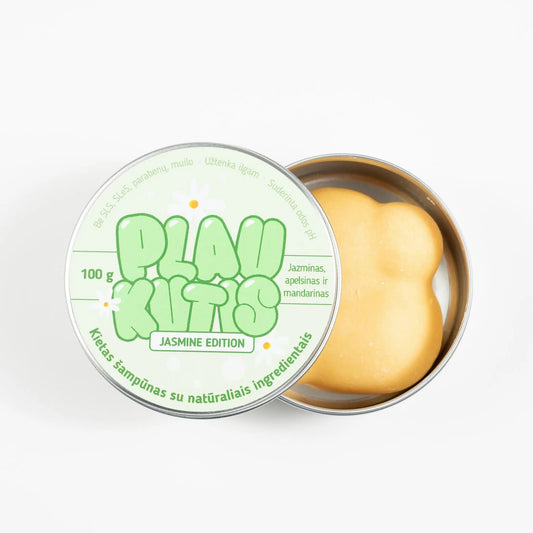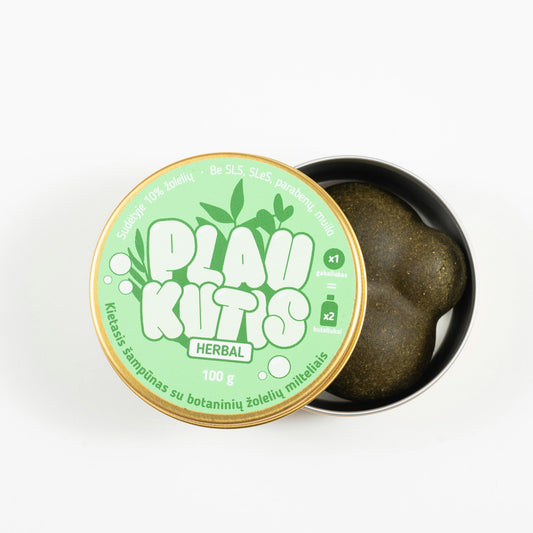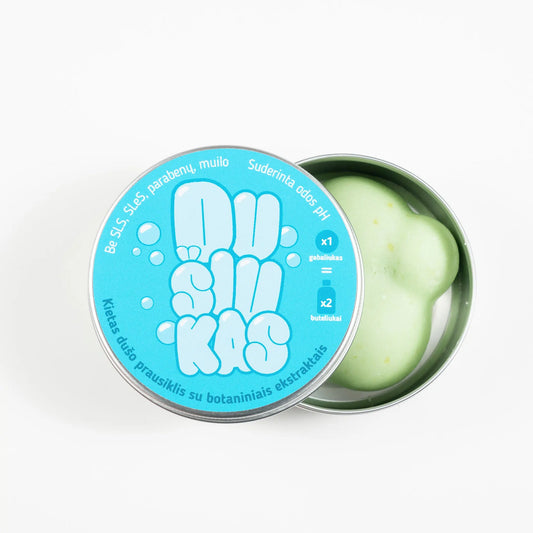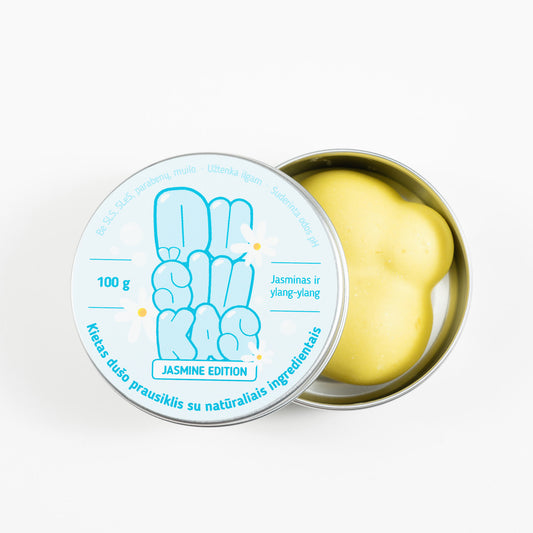An active lifestyle is great for your body and mind, but it can take a toll on your hair. Whether you’re working out at the gym, swimming in the pool, or participating in outdoor activities, your hair is constantly exposed to sweat, chlorine, heat, and environmental factors. These elements can cause dryness, breakage, and scalp problems, ultimately worsening the condition of your hair.
According to a study published in the Journal of Dermatology , frequent exposure to sweat and environmental stressors can increase the risk of scalp irritation by 50% in physically active women. But with proper hair care, you can maintain healthy, strong hair, even if you lead an active life. Let's take a look at the best science-backed tips for women who work out at the gym, swim, or are constantly on the move.
Hair protection at the gym
The gym is a great place to get your body in shape, but the sweat and heat can be damaging to your hair and scalp. Constant sweating can cause oil to build up, clogging pores and causing scalp irritation and thinning hair. Excessive heat can also dry out your hair, making it brittle.

Hair problems related to sweat and heat
Sweating during exercise may feel refreshing to your body, but it can be bad for your hair. Sweat mixes with sebum and dirt, causing an oily scalp and clogging pores. Research published in the Indian Journal of Dermatology found that excessive sweating can lead to excessive sebum (oil) production on the scalp, contributing to dandruff and seborrheic dermatitis. If these conditions are left untreated, hair can become dull, greasy, and unhealthy.
The heat your body generates during intense workouts or in hot environments dehydrates both your scalp and hair. This dehydration reduces the moisture content in the hair shaft, increasing the risk of breakage by as much as 35% , according to a 2018 report on heat-related hair damage.

Pre- and post-workout hair care routines
- Before your workout : Before you hit the gym, spray dry shampoo on your roots. This will help absorb excess sweat from your workout. A study published in Cosmetic Dermatology found that using dry shampoo before your workout reduced sweat-induced scalp irritation by 40% . You can also use a light conditioner on your ends to protect your hair from dryness and frizz.
- Post-workout : Refresh your scalp after your workout with a refreshing spray with ingredients like tea tree oil or peppermint. Tea tree oil reduces inflammation caused by sweat by up to 20% , while peppermint provides a cooling effect. Use a clarifying shampoo once a week to prevent excessive residue buildup, but avoid washing your hair too often, as this can strip your hair of its natural oils.

Hairstyle tips for workouts
Proper hairstyles can help prevent tangles, breakage, and sweat buildup during sports. Here are some suggestions:
- Braids : Loose braids help control sweat without putting tension on your hair. Plus, braiding reduces hair breakage by 43% , according to a study on mechanical hair damage.
- Ponytails : High or low ponytails are great for preventing sweat from building up on your neck and face while keeping your hair secure. Choose a silky scrunchie to reduce friction.
- Sweat-wicking headbands : They help absorb excess moisture while keeping your hairline dry. A sweat-wicking headband can reduce scalp irritation caused by sweat by up to 30% .
Hair care for swimmers
Swimming is a great full-body workout, but pool chemicals and salt water can be very damaging to your hair. Chlorine is particularly drying to your hair, causing it to break and become dry. Salt water, while less damaging than chlorine, can also dry out your hair and cause it to tangle.

Effects of chlorine and salt water on hair
Chlorine is a disinfectant used to clean swimming pools, but it's very harmful to your hair. Research published in the International Journal of Trichology found that exposure to chlorine can weaken the keratin bonds in your hair by as much as 40% , making your hair more porous and more prone to breakage. The more often you swim, the more damage your hair can suffer.
Salt water can dry out your hair due to its high sodium content, which pulls moisture from the hair shaft. This increases the hair's tendency to frizz and frizz by 20% , especially in humid environments.
Protective equipment for swimmers
- Pre-swim oils : Before you get in the pool, apply a thin layer of coconut or argan oil to your hair. These oils create a barrier that protects the hair shaft from chlorine or salt water. Coconut oil reduces protein loss in hair by up to 70% , making it a great solution for swimmers.
- Swimming caps : Silicone swimming caps provide excellent protection from water. Studies have shown that silicone caps protect hair from water exposure by as much as 90% , compared to latex caps, which provide about 70% protection.
- Clarifying shampoos : After swimming, it’s essential to use a clarifying shampoo to remove chlorine or saltwater residue. Look for shampoos with ascorbic acid (vitamin C), which neutralizes the effects of chlorine and restores the hair’s pH balance. Studies have shown that a vitamin C-based clarifying shampoo removes 87% of chlorine residue after just one wash.
Hair care after swimming: moisturizing and restoring
To combat dryness caused by chlorine and salt water, hair needs moisture. Use a deep-hydrating mask that contains hyaluronic acid or aloe vera to lock in moisture. Hyaluronic acid can increase hair's moisture retention by up to 50% , making it a great ingredient for post-swim care.
For maximum hydration, use a leave-in conditioner after washing and let your hair dry naturally. This will help restore your hair's natural elasticity and protect it from further damage.

Quick solutions on the go
With busy lives, there's often little time for a thorough hair care routine. Fortunately, there are a number of portable and effective hair care solutions that allow you to keep your hair clean and healthy, even with a busy schedule.
Travel-sized products and compact solutions
Portable products are great for maintaining healthy hair when you're constantly on the go. Keep a few of these compact tools in your purse for a quick hair refresh:
- Dry shampoo : Ideal for between washes. One spray can absorb excess oil and sweat in minutes. Studies have shown that dry shampoo reduces scalp oiliness by as much as 46% after use.
- Hair Wipes : Convenient and portable hair wipes help clean and deodorize hair after a workout. Wipes containing witch hazel or aloe vera remove sweat while keeping hair soft and moisturized.
- Leave-in conditioner spray : A small bottle of leave-in conditioner can revive and detangle your hair, protecting it from breakage while you're on the go.
Portable hair care essentials
- Mini hairbrush : A compact brush or comb will help prevent tangles and keep your hair smooth all day long.
- Hair ties and clips : A few extra hair ties or clips in your bag will help you quickly style your hair when you need it.
- Moisturizing Mist : A travel-sized moisturizing mist can revitalize hair, especially after sun or physical activity.
These portable solutions allow you to take care of your hair effectively, even if you have limited time.
Myth busting: unexpected facts about hair care and an active lifestyle
- Myth: You need to wash your hair every day after working out.
Fact: Washing your hair too often can dry out your scalp and strip it of natural oils. Instead, try rinsing your hair with water or using dry shampoo. Research published in Dermatology Reports suggests that washing your hair 2-3 times a week is sufficient for most active women. - Myth: Sweat constantly damages hair
Fact: Sweat itself does not damage your hair, but if sweat builds up for too long, it can cause scalp irritation and dandruff. Always cleanse your scalp after heavy sweating. - Myth: Swimming caps don't protect your hair
Fact: Properly worn swimming caps protect hair from water by up to 90% . Silicone swimming caps provide better protection than latex caps. - Myth: Chlorine only harms dyed hair
Fact: Chlorine can damage all hair types by stripping away natural oils. Color-treated hair may fade faster, but even uncolored hair is at risk for dryness and breakage. - Myth: Exercising with braids or buns causes hair to break
Fact: Properly done loose braids or buns protect hair from friction and reduce breakage by 43% , according to a study on preventing mechanical hair damage.

Practical tips for an active hair care regimen
- Limit shampooing : For most active women, washing your hair 2-3 times a week is enough. Washing too often can be drying and strip away natural oils.
- Moisturize regularly : Keep your hair moisturized by using leave-in conditioners, oils, or moisturizing mists. Dry hair is more prone to breakage and frizz.
- Use protective hairstyles : Braids, ponytails, or ponytails help reduce hair exposure to sweat and environmental factors during exercise.
- Deep condition weekly : Include a deep-hydrating mask in your routine at least once a week to restore lost moisture and protect your hair from the effects of sweat, chlorine, or heat.
- Rinse after your workout : Even if you don't plan on washing your hair daily, rinse your hair with water after your workout to remove sweat and prevent residue buildup.
Frequently asked questions about hair care for an active lifestyle
Q: How often should I wash my hair if I exercise every day?
A: You don't need to wash your hair every day. You can use dry shampoo or rinse your hair with water between washes to keep it clean but not strip it of moisture.
Q: How do I protect my hair from chlorine in the pool?
A: The best protection is pre-swimming oil and a silicone swimming cap. After swimming, use a clarifying shampoo to remove chlorine residue.
Q: How do I avoid frizz after a workout?
A: Apply a light oil or leave-in conditioner before your workout to prevent frizz. Sweatbands or sweat-absorbing headbands also help control frizz.
Q: Can I use hot styling tools after a workout?
A: It's best to avoid using hot styling tools when your hair is still damp from sweat. Allow your hair to dry completely before using hot tools.
Q: How do I protect my dyed hair when swimming?
A: Use a pre-swim oil and a silicone cap to protect your hair from chlorine. After swimming, wash with a color-protecting shampoo and condition liberally.

Conclusion: How to maintain healthy hair with an active lifestyle
Maintaining healthy hair while living an active life doesn’t have to be complicated. By fitting your hair care routine into your workout schedule, you can maintain gorgeous hair, even if you’re constantly working out or traveling. Simple steps like using dry shampoo, pre-swim oils, and weekly deep conditioning will help protect your hair from sweat, chlorine, and environmental stress. Make moisturizing and scalp care a priority, and your hair will stay healthy and beautiful, even when you’re on the go.













